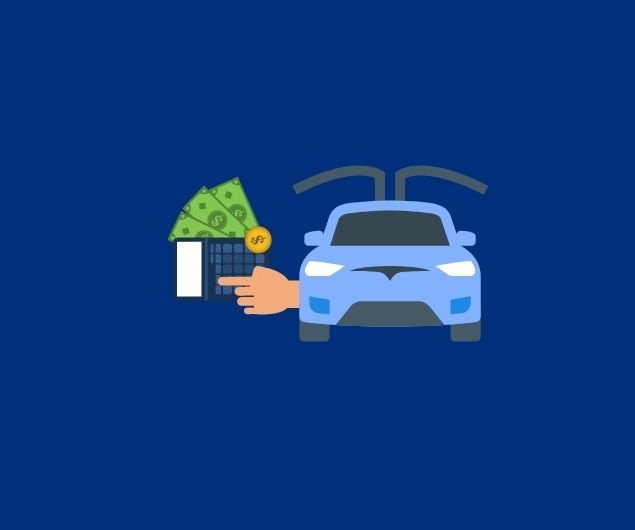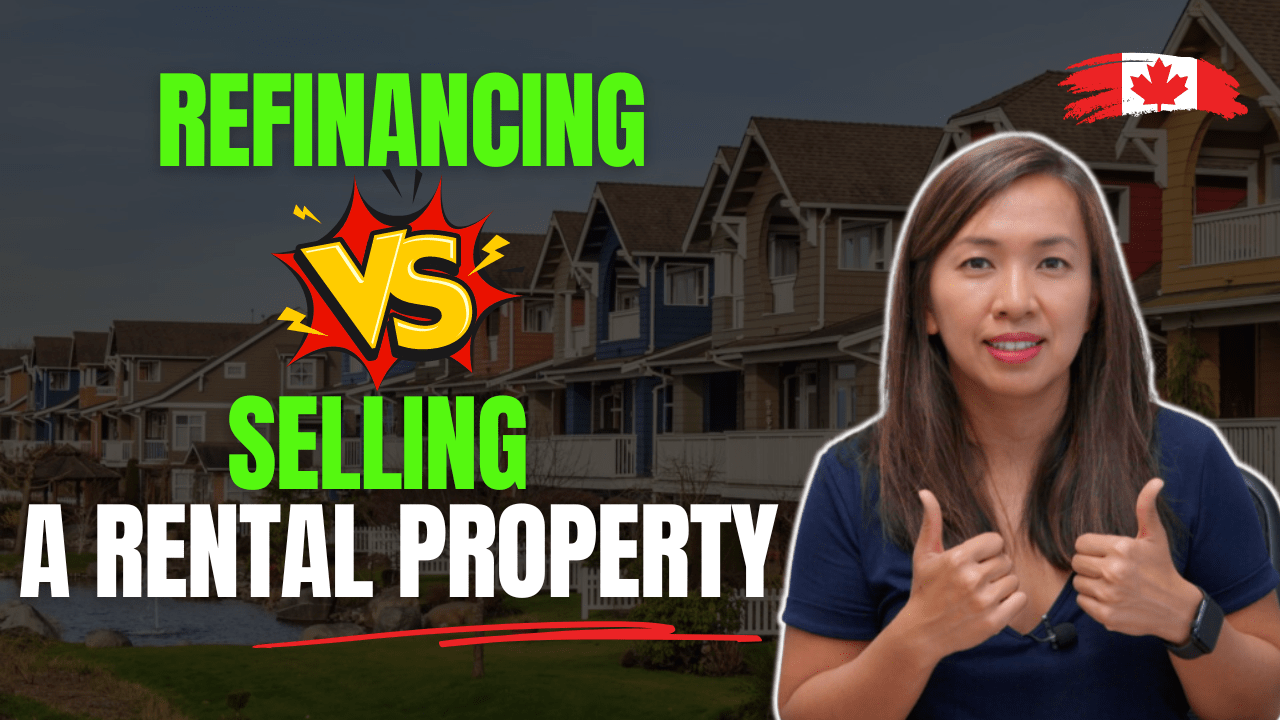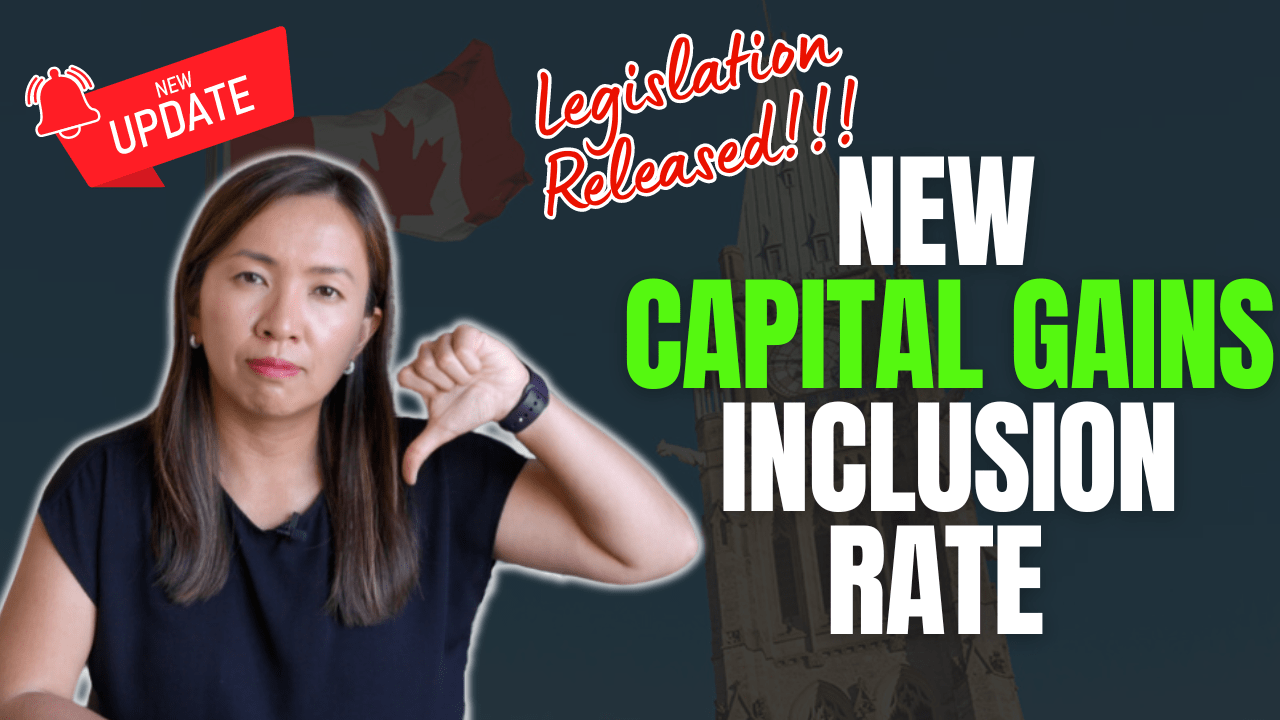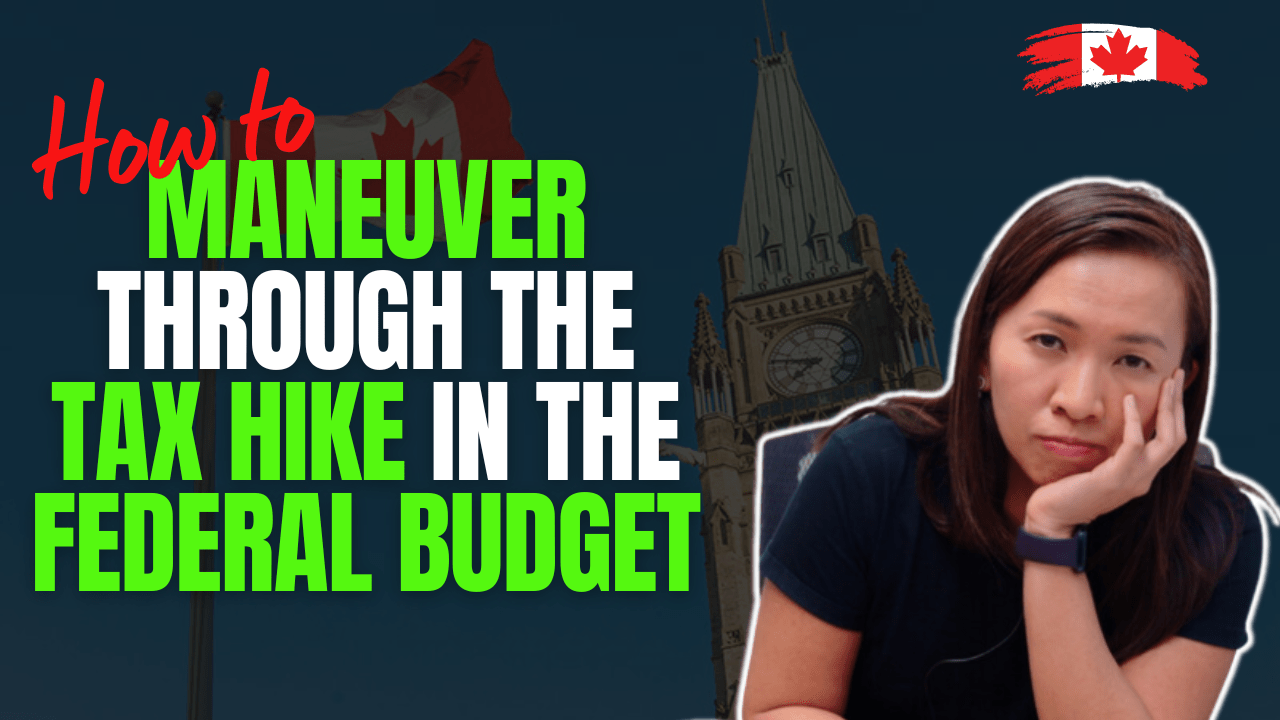A year ago, I recorded a video on how to save $28K of tax payable when buying a Tesla. We’ve since got tons of questions.
Since there’s so much information out there, and so many questions unanswered, I decided to answer the top 10 most commonly asked questions.
You can watch my video on this here.
1. Do I really get a cheque of $28,000 when buying a tesla?
No, the tax saving of $28,000 is calculated based on claiming your brand new EV purchase that’s over $55,000 with 90% of business usage.
If I were to order a Tesla Model Y today, I would need to pay roughly $84,000 CADplus HST with zero upgrades. This is a total of roughly $95,000 in Ontario.
Maximum you can deduct is $55,000 plus HST… assuming that
1) You did NOT claim any government rebate
2) You own your own business in your PERSONAL name and
3) You have income taxed at the highest marginal tax rate of 53.5% in Ontario and
4) You use the vehicle for business purpose
You can reduce your taxable income, which is the amount that’s subject to tax, by the business use of your vehicle.
In my example in the other video, the taxpayer uses the Tesla 90% of the time for business use. Hence, he can claim:
= ($55,000 + HST) x Business use %
= $62,150 x 90%
= $55,935
Depending on the taxpayer’s personal marginal tax rate, this taxpayer can potentially save as much as
$55,935 x 53.5% = $29,925
If this taxpayer’s marginal tax rate is slightly lower, around 50%, the tax saving is $55,935 x 50% = $27,968, which is the $28K tax savings that the previous video is referring to.
Chances are, you are NOT going to get a cheque back from CRA, but you will be reducing the amount of taxes you have to pay the first year you acquire a qualified zero emission vehicle.
2. Tesla is no longer on Transport Canada’s website to receive a government rebate. Does it still qualify for this $28,000 tax deduction?
In the video, I did make reference to Transport Canada’s website so that you can easily grasp the qualifying vehicles available.
The official definition as per the Income Tax Act is that a Zero-emission vehicle is a motor vehicle that is a plug-in hybrid with a battery capacity of at least 7kWh or is fully electric, fully powered by hydrogen, or a combination of the two.
And the vehicle has to be acquired after March 19, 2019 and before 2028 to qualify for the extra deduction.
Even though Tesla no longer qualifies for a rebate on the Transport Canada’s website, based on the Income Tax Act definition, it still qualifies for the extra tax deduction.
In fact, it is extremely important to know that you cannot take any government rebate if you would like to qualify for the $55,000 tax deduction on your zero emission vehicle.
If you intend on buying a tesla or any other vehicle, make sure you check the technical specification of the vehicle before your purchase.
3. If I’m buying a Tesla that’s used, can I still qualify for the same tax savings?
According to the Regulation 1102(26), the vehicle cannot be a vehicle that has been used or acquired for use for any purpose before it was acquired by the taxpayer.
So to answer your question, you cannot purchase a used zero emission vehicle and qualify for the bigger tax deduction.
You can still get the regular tax deduction which max out at $30,000 plus HST, you just can’t write off $55,000 plus HST in the first year.
4. Can I save the same amount if I use my car for employment purposes?
If you are required to use your car for employment purposes and your employer has issued a T2200 Declaration of Conditions of Employment specifying that you are required to use your vehicle for the purpose of employment, you are eligible for the bigger writeoff for your zero emission vehicle.
You can find a copy of the form on CRA’s website here.
Similar to the business deduction example I was giving before, an employee is required to keep track of a logbook of how much employment use % they have incurred.
You’re only eligible to deduct the employment use percentage of the vehicle against your salary.
If you receive an allowance from your employer and the allowance has not been included in your T4 salary, you must also offset the allowance against the deduction.
Employment expense is an area of focus for CRA audit. Make sure you get all your documentation ready to avoid future headaches.
5. Can I lease a Tesla and still get the same savings? What happens if I lease the Tesla? Is the lease payment still $800 per month?
Well, the tax write off is only available if you own the vehicle.
If you lease the vehicle, the maximum you can claim is $800 plus HST per month. And this maximum amount is further restricted by a formula developed by CRA based on the Manufacturer’s Suggested Retail Price.
If you were to lease Tesla today and pay $1,034 monthly lease payment (as per their website), you do not automatically get $800 plus HST as your tax write off.
Instead, it goes through the calculation to restrict the tax deduction based on the MSRP of the vehicle.
In the example below, you can see that if someone were to lease a Tesla today, and incur five months of payment, total $7,238, the maximum he can deduct is $3,334.
Lease deduction calculation can get complicated, just keep in mind that you will be able to deduct less than $800 plus HST.
6. Can I finance the purchase of the car and still get the same tax savings? Can I write off the finance payments and interest expenses in future years?
You still get the same tax savings whether you finance the vehicle or purchase your Tesla outright with cash. Assuming you don’t collect any government rebates.
If you choose to finance the purchase of your car, you also get to write off the future interest expense incurred on the loan.
You do not get to write off the loan repayment though.
7. What happens if I sell the car?
If you sell the car altogether and repurchase a regular vehicle (not a zero-emission passenger vehicle), you may have to take a portion of the sale price of your vehicle as recapture. This recapture income is that taken back as income based on the business use percentage of the vehicle for the year.
Let’s use an example to explain.
If you are buying the Tesla Model Y for $84,000 plus HST and you claim full $55,000 plus HST CCA in the first year.
When you resell the Tesla Model Y for $30,000 plus HST a few years down the road, the recapture income is calculated based on the following:
Proceeds X ($55,000 / Purchase Price of Model Y)
= ($30,000 plus HST) x ($55,000 / ($84,000 plus HST))
= $33,900 x $55,000 / $94,920
= $19,643
Recapture is $19,643. The actual amount you would take it into income depends on the business use % of your vehicle.
If you use 10% of your Tesla for business purposes in the year of disposition, then you will take $19,643 x 10% = $1,964 as income.
What if you sell the car and repurchase another zero emission vehicle?
The recapture amount is then used to reduce the amount you are eligible to claim.
In our example, the recapture is $19,643. If you repurchase another zero emission vehicle, instead of having a $55K plus HST write off, you can now write off:
$55,000 plus HST – $19,643 = $42,507
Again, you would need to apply the business use percentage to get the actual tax deduction.
8. Can I write off the vehicle against my rental properties and get the same savings?
Absolutely. You are eligible to claim automobile expenses against your rental properties.
The key here though is the logbook. You will have to track the miles you’ve driven to manage your properties.
Depending on the number of properties you own, if you own ONE rental property, you can only deduct the mileage if you meet all of the conditions specified on CRA’s website:
- You receive income from only one rental property that is in the general area where you live
- You do part or all of the repairs & maintenance on the property
- You have vehicle expenses to transport tools and materials to the rental property
You cannot deduct motor vehicle expenses you incur to collect rents. CRA said that those are “personal expenses”.
If you own two or more rental properties, the rules are less strict:
- You can deduct the mileage you incur to collect rent
- Supervise repairs (and you don’t have to do the repairs yourself anymore)
- Manage the properties
And the properties do NOT have to be in the general area where you live.
One word of caution though, your rental properties have to be located in at least two different sites, away from your principal residence.
If you have two rental properties, one of which is the basement of your primary residence, CRA does not allow you to deduct the mileage related to managing your basement tenants.
9. Can the tax savings apply to self-employed business, i.e. sole proprietorship, not a business? Do I need to be incorporated to take advantage of the $28,000 tax saving?
In the example I did in the previous video, the tax savings were calculated based on personal tax rate and owning a business as a self employed business, or sole proprietorship.
You do not need to be incorporated to take advantage of the $28,000 tax saving. In fact, you save most if you own the business in your personal name.
If you own your business in the corporation, the calculation is completely different and it can get quite complex and confusing.
10. What happens if I am buying a Tesla in the corporation that I own my small business in?
Well, as I said earlier, this can get quite complicated.
Remember corporation is considered a separate legal entity for you, even though you may be the only shareholder of the corporation.
If you are buying the tesla or another car, in the corporation, and it is made available for you to use as an employee or shareholder… CRA wants to tax you on receiving this benefit by having the car available for your personal use.
Yep. They are making you pay personal tax on the benefit you deem to have received from having the vehicle.
There are two types of benefit that you have to include in your personal return as employment income:
- Standby charge benefit
- Operating cost benefit
Standby charge benefit is calculated based on:
- Original purchase cost of your vehicle or the monthly lease cost
- Number of months the car is available to you for personal use
- Number of KM driven for both personal and business purposes
- Any reimbursement made by the employee for the availability of the vehicle
When your Tesla is owned by the corporation, the standby charge is calculated as:
= 2% x Tesla purchase price x number of months available for personal use in the year
= 2% x ($84,000 + HST) x 12 months
= $22,781
This $22,781 standby charge is then added to your personal income and you get taxed accordingly based on your marginal tax rate.
If you use your vehicle more than 50% for business use, you’re eligible for a Standby charge reduction. So it won’t be $22,781 added to your income, but less.
The amount that’s less is driven by the ACTUAL KM driven for personal use.
Say you only drive 1,000km for personal use and you drive 19,000km for business.
Your standby charge in this example would be $22,781 x 1,000km/20,004km (as prescribed by CRA) = $1,139.
The second benefit is called operating cost benefit. Operating cost benefit calculation is a little more straightforward.
In 2022, operating benefit is $0.29 per personal use km driven by you.
In our example, you drove 1,000km for personal use, so the operating cost benefit added to your income would have been 1,000km x $0.29 = $290.
But…an alternate operating benefit calculation is available if you use more than 50% of the vehicle for business use purposes.
In our example, the personal use % is 1,000km/20,000km = 5%. Business use is 95%.
An alternate calculation is half of the standby charge calculated above.
Alternate calculation = $1,139 / 2 = $570
In this example, it is best to use the regular method to calculate the operating expense benefit.
In summary, this taxpayer would need to include a standby charge of $1,139 and operating expense benefit of $290 in his personal tax return as income. It’s not too bad, isn’t it?
But what does this really mean in general? Well, what it really means in general is that unless you are using the vehicle almost always for business purposes, it does not give you any benefit to own your vehicle or lease your vehicle directly in the corporation.
The amount you would have to pay on your personal side may not justify the extra tax savings you would get from taking the deduction in the corporation.
Now that we have gone over the top 10 questions I got from buying a Tesla and saving $28,000, make sure you leave us a comment if you have any further questions.
Until next time, happy Canadian Real Estate Investing.
Cherry Chan, CPA, CA
Your Real Estate Accountant





